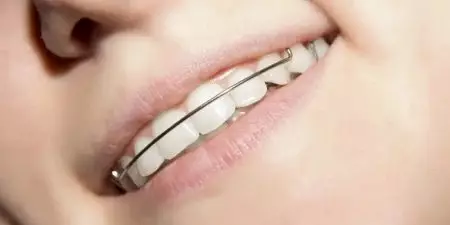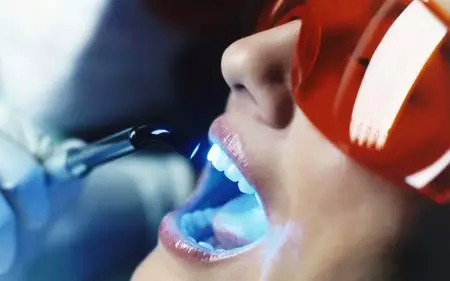Dental implants are one of the most effective methods of restoring a tooth row, allowing you to restore a lost tooth more reliably than, for example, with removable dentures. However, in rare cases, there may be a situation when the implant does not take root in the bone and requires additional intervention from the dentist. What should be done in such a case?
How do I know if the implant has taken root?
In order to understand whether dental implantation has been successful or not, you need to look at several factors.
- Time after implant placement. It usually takes 3 to 6 months for the bone around the implant to fully heal and attach to the jaw. If less time has elapsed, it can be assumed that the implant has not yet had time to fully heal.
- Absence of pain. If there is no pain after implant placement and the procedures associated with implant placement, this may indicate that the implant has settled well.
- Lack of movement. If the dental implant is stable and does not move when pressure is applied to it, it is likely to be well implanted.
- X-ray. X-rays can show how the implant has taken root. If the bone is well ossified, this can be a sign that the implant has been successfully integrated.

If you are concerned about severe pain in the implant area, redness, swelling or bruising of the gum, bleeding, pus discharge or bad breath, this may indicate that the dental implant has not taken root.If you are unsure about the success of the dental implant, it is best to see a dentist for an evaluation.
What should I do to make the implant take root?
There are several interventions that help to speed up and improve implant engraftment:
- Follow your doctor’s instructions. Most often this includes limiting exercise, taking medication, and following a certain diet.
- Practise good oral hygiene. Oral care is critical to successful implantation. Regular brushing, flossing and mouthwash can help prevent infection and speed up the healing process.
- Avoid smoking and drinking alcohol. These can slow down the healing process and affect the quality of bone tissue. Therefore, you should avoid these habits for better results.
- Eat right. Proper nutrition is key to bone healing. Your diet should contain adequate amounts of protein, calcium, phosphorus and vitamins.
- Visit your doctor for follow-up. Regular visits to your dentist or implant surgeon can help assess the condition of the implant and detect possible problems early.

Remember that the healing and implant engraftment process depends on many factors, and you can influence its success by following the above tips and instructions from your doctor.
What should I do if the implant has not taken root?
If you find that your implant has failed to take root, you should see your dentist or implant surgeon for further evaluation and further treatment. Depending on the cause of the failure, your dentist may recommend additional treatments to improve bone health, replacing the implant with a more appropriate size, or treating an infection.
Why dental implants don’t take root
There are several reasons why dental implants may not take root:
- Use of poor quality material. This is the main cause of implant rejection.
- Improperly fitted implant or crown.
- Insufficient bone tissue. This is necessary for the implant to be properly anchored and held in position.
- Difficulties with chewing. If the load is not evenly distributed on the implant, it can cause damage to the bone, making healing more difficult.
- Incorrect position of the implant. If the implant is placed in the wrong place or angle, it can lead to rejection.
- Failure to take care of the implant. Failure to follow instructions after insertion may result in rejection of the implant.
- Medical issues. Some bone diseases or autoimmune diseases can lead to implant rejection. It is very important to perform a complete medical examination of the patient beforehand.
- Infection. Infection in the implant area can lead to implant rejection. This often happens if you do not have a complete oral hygiene and professional dental cleaning.
- Personal habits. Smoking and alcohol consumption can slow down the healing process and affect the quality of bone tissue, which can lead to implant rejection.
It is important to realise that each case of implant rejection is different and depends on many factors. To reduce the risk of implant rejection, patients should follow their dentist’s instructions and advice, follow a healthy lifestyle and visit the dentist regularly for preventive check-ups.
How often dental implants fail to take root
Statistics show that implants predominantly take root. However, as with any medical procedure, unfortunate cases do occur. In general, the rejection rate of dental implants is considered to be very low, approximately 2%. To avoid problems with implant rejection, choose a trusted clinic.
 If you are concerned about severe pain in the implant area, redness, swelling or bruising of the gum, bleeding, pus discharge or bad breath, this may indicate that the dental implant has not taken root.If you are unsure about the success of the dental implant, it is best to see a dentist for an evaluation.
If you are concerned about severe pain in the implant area, redness, swelling or bruising of the gum, bleeding, pus discharge or bad breath, this may indicate that the dental implant has not taken root.If you are unsure about the success of the dental implant, it is best to see a dentist for an evaluation.
 Remember that the healing and implant engraftment process depends on many factors, and you can influence its success by following the above tips and instructions from your doctor.
Remember that the healing and implant engraftment process depends on many factors, and you can influence its success by following the above tips and instructions from your doctor.





